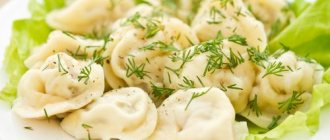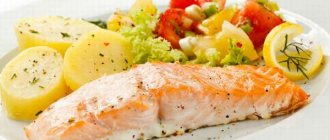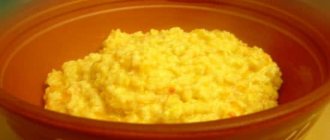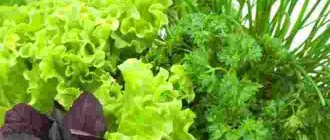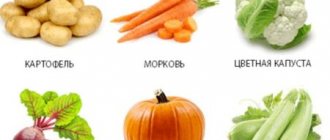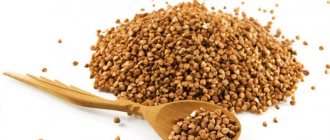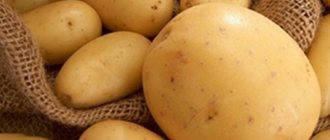The benefits of watermelon for the body and gastrointestinal tract
Watermelons contain a high concentration of beneficial components. These substances have a beneficial effect on the digestive tract and the functioning of the body as a whole.
The berry improves immunity, normalizes metabolic processes, replenishes the supply of vitamins and creates a good prevention of some disruptions in the functional state of the gastrointestinal tract.
Beneficial features:
- diuretic effect due to the large amount of water contained in the pulp;
- normalization of stool, elimination and prevention of constipation;
- elimination of swelling;
- improvement of cell division processes;
- increasing the protective functions of the body;
- choleretic effect;
- restoration of electrolyte balance;
- prevention of urolithiasis;
- removing harmful cholesterol from the body;
- cleansing the body of toxic products;
- improvement of intestinal motor function.
Watermelon and melon for gastritis
All internal organs are interconnected, so one disease can provoke another that is not related to it at first glance. Most often, people with pancreatitis are diagnosed with gastritis and cholecystitis. The functioning of the liver and intestines is disrupted, which leads to indigestion, indigestion and a sharp deterioration in the patient’s condition.
Cholecystitis is an inflammation of the gallbladder caused by excess production of pancreatic juice and a lack of enzymes. Impaired production of digestive juice can cause an exacerbation of gastritis, which, when entering the chronic stage, can cause severe pathologies, including oncology.
Due to enzyme deficiency, the intestines also suffer, as a large amount of undigested food enters it. Pancreatitis provokes gastritis and cholecystitis, and gastrointestinal diseases cause inflammation of the pancreas. Patients require complex treatment. Watermelon for gastritis, if the pathology is not accompanied by other diseases, can be eaten; there are no indications for prohibition, but this should only be done with the permission of a doctor. The quantity of the permitted product is also determined by a specialist.
Due to the large amount of liquid and the absence of acid, the berry cannot damage the gastric mucosa. However, if you abuse this delicacy, you can stretch the walls of the stomach, which in turn will lead to an exacerbation of gastritis. If watermelon gives you a stomach ache, you should not eat it.
Important information: How to properly prepare dietary vegetable soup for pancreatitis
If patients eat 1-2 pieces, watermelon will not cause harm. You should not eat cold food, so the watermelon should be at room temperature. It is undesirable to eat fruits that have been cut for a long time.
They may begin to develop pathogenic microorganisms that can negatively affect the stomach and liver.
It is better to avoid eating melon if you have gastritis. This product is not digested in the stomach and can cause fermentation. The result is nausea, heartburn and flatulence. Melon is not recommended even in remission. If the doctor has approved the product, then its use must be limited to 70 g per day.
Can watermelon provoke an exacerbation of pancreatitis?
Drawing up a menu for pancreatitis implies a clear division of products into a permitted and prohibited list, as well as a number of rules that must be taken into account when introducing berries into the diet. Watermelon has many beneficial properties for the digestive tract. However, if consumed untimely, it can provoke an exacerbation of the pathology.
For example, if you introduce the berry into the menu without waiting for a stable remission, when signs of exacerbation of the inflammatory process appear, or if you eat it in too much quantity.
Watermelon provokes exacerbation of pancreatitis in the following cases:
- one-time consumption of too large a portion of the product (stretching the walls of the stomach causes pain, a feeling of heaviness in the abdomen and disturbances in the process of bowel movement);
- deterioration of the patient’s general condition may be due to too frequent consumption of watermelon (with a significant increase in intestinal motility, nausea, vomiting, diarrhea and flatulence may occur);
- if pancreatitis is combined with cholelithiasis, then eating watermelon can provoke unwanted movement of large stones (the stone will get stuck inside the narrow ducts, and there will be a risk of developing pancreatic necrosis).
The benefits and harms of watermelon for illness
Eating aromatic and juicy berries for inflammation of the pancreas is allowed when the disease is in remission. This is due to a number of positive properties of the product. Thus, watermelon acts as an element of dietary nutrition due to its low calorie content.
Antioxidants in its composition effectively fight free radicals, cleansing the body, and folic acid enhances protein processing and takes part in the process of cell division.
Reference. Thanks to magnesium and potassium, watermelon improves the functioning of the neuromuscular system and regulates heart rate.
If sweet berries are consumed during an exacerbation of pancreatitis, irreparable harm will be caused to the body. A single dose in large quantities will cause an increase in the load on the pancreas. Increased peristalsis is fraught with stagnation of pancreatic secretions and the development of pancreatic necrosis . Uncontrolled consumption of watermelon will cause nausea, diarrhea, colic and flatulence.
Features of consuming watermelon at various stages of inflammation
Different stages of pancreatitis require specific adjustments to your diet. Products that are allowed for use during the period of remission may be prohibited in the acute form of the pathology. These include watermelon. At some stages of the inflammatory process, the berry can provoke a deterioration in the patient’s condition, at others it can improve the functioning of the pancreas and accelerate the tendency to recovery.
With exacerbation of pancreatitis
Watermelon contains special fibers that stimulate the process of gas formation. If there is damage to the mucous membranes of the pancreas or a violation of its functional state, the fetus can provoke an increase in the inflammatory process. To the existing symptoms of exacerbation of pancreatitis, bloating, diarrhea and colic will be added.
During an attack of pathology, the consumption of watermelons and other fresh berries is strictly prohibited.
Other consequences of eating watermelon for AP:
- increased secretion of gastric juice;
- increased inflammatory process;
- decreased tendency to recovery.
For cholecystitis
For inflammatory processes in the gallbladder, experts recommend including watermelons in the diet. The fruits contain plant fiber. This substance can eliminate constipation and prevent the recurrence of disturbances in bowel movements.
Watermelon has beneficial properties only when consumed during the period of remission of cholecystitis. During a painful attack or during an exacerbation of the pathology, this product is prohibited from being introduced into the diet.
For chronic pancreatitis
During the period of remission of chronic pancreatitis, watermelon is not only possible, but also necessary to be included in the diet. Experts recommend starting to eat the berries gradually and about a month after the attack of the pathology has stopped. The fruits contain large amounts of fructose. This substance does not have a negative effect on the pancreas and does not provoke an increase in the process of insulin production.
Benefits of watermelon for HP:
- the pulp of the fruit contains antioxidants, which significantly slow down inflammatory processes in the digestive system;
- watermelons contain a minimal amount of protein and lipids (when consumed, the load on the digestive tract is minimal);
- the presence of folic acid in the pulp ensures the normalization of metabolic processes in the body (nutrient components are better absorbed from the gastrointestinal tract).
Video on the topic: Why is it healthy to eat watermelon?
How to choose the right product so that it brings benefits and not harm?
So, now you know that in acute cases of the disease it is necessary to avoid watermelon, but in cases of chronic pancreatitis it is allowed. But, before you buy fruit from a store counter, you need to remember very simple rules.
To prevent juicy watermelon slices from leading to increased symptoms of pancreatitis, it is necessary to consume a ripe, high-quality sweet product.
Time to buy
If you have an inflamed pancreas, you should not buy early varieties of watermelon. Such a product is usually grown using a variety of chemicals. If you eat an early fruit, this can negatively affect the condition of the pancreas.
It is best to buy watermelon in the second half of August or, for example, in September.
Size
The most optimal size for such a product is from 5 to 7 kg. You should not buy one that is too small, as there is a possibility that the watermelon is simply unripe.
Also read on our website: What fruits can you eat if you have pancreatitis?
Large watermelons, which weigh from 9-10 kg, can certainly be sweet and tasty. But here it is necessary to note a very important point. That such a product is grown in most cases with the help of a variety of nitrates and substances to accelerate growth.
Tail - indicates the ripeness of the product
Not many people knew that the tail of a watermelon indicates ripeness. If you eat a fruit that has a green tail, it means that it was picked ahead of time. Therefore, they are unripe and are not recommended to be eaten if the pancreas is inflamed. You need to buy a product that has a dry tail, this is the kind of watermelon that will benefit.
Tapping sound
One of the important selection criteria is the sound of tapping. If you knock on a watermelon and the sound is dull, this means that the product is ripe. It also indicates a ripe variety: if you knock on the sides, you can hear a crackling sound. If the sound is dull, then such fruits are unripe.
Additional criteria:
- When cut, the watermelon pulp should have sugar grains.
- If the cut is smooth, then such a fruit, as practice shows, is grown on the basis of its chemical composition.
- Watermelon flesh is pink and has veins. Note that some varieties may have a purple tint. The veins in this product are usually white or slightly yellow, which means they have been grown with nitrates.
If you place a small piece of pulp in a glass of clean water, it becomes cloudy and may turn pink. If the fruit is grown with nitrates, the water will not be cloudy, but simply turn pink.
Recommendations from Elena Malysheva in the special issue “Live Healthy!” on how to overcome pacreatitis using the healing effects of natural remedies.
And another proven method for fruit ripeness. If you place it in a bathtub or basin and pour water to cover the entire fruit, it will float if it is ripe, but if not, it will drown.
Also read on our website: Diet for pancreatitis of the pancreas
Recipes for preparing healthy dishes based on watermelon pulp
Watermelon for pancreatitis can be consumed not only as an independent product, but also in the form of drinks and even desserts. When preparing them, it is important to consider the absence of harmful additional ingredients. Pancreatitis implies a strict restriction of the daily sugar intake and prohibitions on some sweet ingredients.
Homemade juice:
- You can prepare juice from the pulp using a juicer, blender, or simply squeezing it using gauze.
- There should be no fiber present in the juice (if necessary, the workpiece is filtered again).
- You cannot store fresh watermelon juice (it is recommended to prepare the drink before drinking).
Refreshing mousse:
- To prepare the mousse you will need 700-800 g of pulp, 80 g of sugar or sweetener, 10 g of gelatin.
- Prepare the gelatin according to the instructions (pour in warm water and leave until it swells).
- Grind the pulp into a homogeneous puree.
- Combine all ingredients and re-grind or mix.
- The mousse can be consumed slightly chilled.
Watermelon honey:
- Squeeze the juice from the pulp.
- Bring the mixture to a boil (boil the juice for at least 2-3 minutes).
- Cool the juice and strain through cheesecloth.
- Boil the workpiece again for two or three hours (the liquid should become thick).
- During the cooking process, foam will form, which will need to be skimmed off.
- The cooled mass can be poured into containers and placed in the refrigerator.
- You can supplement the recipe with sweeteners.
How to choose ripe berries without harm to health?
Is it worth mentioning that all food consumed must be fresh and of high quality. This is especially true when following a therapeutic diet. After all, one missing product eaten by a patient can cause an exacerbation of the disease.
If the answer to the doctor’s question, is it possible to have watermelon for pancreatitis, is positive, then you should pay attention to the nuances of choosing this fruit when purchasing.
- When purchasing, you must visually inspect the berries - they should not be wrinkled or cracked. A good fruit is brightly colored and has uniform stripes;
- If you run your fingernail over a ripe berry, you will leave a characteristic scratch mark;
- If, after cutting a watermelon, you notice yellow veins, then it may contain nitrates, so you should not take risks by eating a questionable product;
- Already cut fruit should be stored in the refrigerator;
- You should not take berries that are too small or too large; a weight of 5-7 kg is considered ideal;
- Remember that it is recommended to take watermelons in season - from the second half of August, in September.
At home, you can additionally test the purchased fruit for the presence of dyes. To do this, place a piece of pulp in a glass of water at room temperature and leave for 40-60 minutes. Normally, the water takes on a light pinkish-cloudy tint.
What are the benefits of melon?
A distinctive feature of melon is the presence of a large number of natural antioxidants in the fruit. The berry can slow down inflammatory processes, improve the functioning of the digestive system and normalize the process of bowel movement.
Melon contains fructose. This nuance allows the product to be used for patients with diabetes (the pathology in most cases becomes a complication of pancreatitis).
Beneficial features:
- improving the process of food digestion;
- increasing the regenerative properties of tissues;
- normalization of water-salt metabolism in the body;
- accelerating the process of removing sand and small stones from the kidneys (due to its diuretic properties);
- improvement of peristalsis of the digestive organs;
- neutralization of the effects of toxic substances;
- increased vitality;
- improving the condition of the walls of arteries, veins and blood vessels;
- beneficial effect on the immune system.
Useful properties of watermelon
Striped berries are not only everyone’s favorite delicacy, but also a source of many useful substances. Watermelon contains elements such as:
- iron;
- iodine;
- magnesium;
- sodium;
- potassium;
- calcium;
- phosphorus;
- fluorine;
- manganese;
- copper;
- zinc;
- cobalt.
Watermelon is rich in vitamins A, C, B1 and B2, PP and folic acid. And the lycopene contained in it provides an anti-inflammatory effect. Watermelon is 80% water and has a mild diuretic effect.
The product is low-calorie, does not contain proteins and fats, which is important for people suffering from pancreatitis.
Watermelon is good for people with diseases of the nervous and cardiovascular systems. And also for those who often have digestive problems. The product contains fiber necessary for normal intestinal function, so it will be useful for patients with chronic constipation.
Despite all the beneficial properties, with pancreatitis of the pancreas, the berry can greatly worsen the patient’s condition, and a diet with a limited amount of raw vegetables and fruits is the basis for the treatment of both chronic and acute forms of the disease.
The pancreas produces enzymes for digestion. With pancreatitis, this process is disrupted, so you can only eat thermally processed dietary foods so as not to overload the gastrointestinal tract. If you do not adhere to this rule, pain syndromes of varying severity may occur, triggered by bloating and fermentation in the intestines.
Melon for exacerbation of pancreatic pathology
During the period of exacerbation of pancreatitis, melon belongs to the category of prohibited products. Fruits can be introduced into the diet a few weeks after the attack has stopped. At the initial stage of rehabilitation therapy, it is recommended to consume melons after heat treatment (in the form of jelly, puree, jelly or baked, as part of other dishes).
Unripe fruits are prohibited during all stages of pancreatitis (an increased content of coarse fiber will provoke an attack of pathology).
Consequences of eating melon for AP:
- increased symptoms of diarrhea;
- disruption of digestive processes;
- increased intensity of abdominal pain;
- the occurrence of flatulence.
Melon in the diet of a patient with pancreatitis
For people with pancreatitis, eating melon can end sadly.
Melon is not only tasty, but also healthy. It contains almost all B vitamins, as well as A, C, E, H and PP. It contains even more minerals than watermelon. The more significant of them are the following:
- calcium;
- potassium;
- copper;
- magnesium;
- zinc;
- manganese;
- iodine;
- iron;
- fluorine;
- phosphorus;
- sodium.
Is it possible to eat melon with pancreatitis? The fruit contains much more carbohydrates than watermelon, so eating it fresh is not recommended. This can cause pain, colic and loose stools.
Important information: Is it possible to smoke with pancreatitis?
When the pancreas becomes inflamed, insulin production is disrupted. Eating melon during pancreatitis can cause a sharp increase in blood sugar, even in patients who do not have a predisposition to diabetes.
Is it possible to have melon for pancreatitis outside the acute stage? If the patient has a chronic form of pancreatic disease, the product can be of great benefit.
Eating melon will help normalize carbon metabolism.
It is worth giving preference not to fresh melon, but to mousses, jelly and juice from melon pulp. You can eat no more than 100 g of product at one time. During cooking, especially juice, fiber is destroyed, due to which the negative impact of the product is significantly reduced.
The same rule applies to watermelon. If it gives you a stomach ache, you can replace fresh berries with a small amount of juice.
Potential benefits for the body
Watermelon is a very tasty and juicy giant berry. The fruit of this plant has many beneficial properties. The important qualities of the berry include the following:
- It is a natural diuretic and choleretic agent.
- Formulated with lycopene, renowned for its antioxidant properties.
- Sufficient fiber content improves metabolic processes throughout the body and the functioning of the digestive system.
- Contains magnesium and iron, which can improve heart function.
- It is a supplier of folic acid and B vitamins.
- Among common sugars, fructose predominates rather than glucose. This relieves the pancreas from additional stress.
- Low calorie product.
- The berry is good for the liver in case of hepatitis A, cirrhosis, cholelithiasis.
- Facilitates the course of colds.
- Reduces the risk of diabetes.
The daily consumption rate is up to 2.5 kg of watermelon pulp. But you should receive it gradually, in small portions. This is significant for those people who suffer from kidney stones. The use of this product is extremely important after treatment with antibiotics. With regular use, we can talk about an increase in body tone and immunity.
Chemical composition of watermelon
Watermelon pulp includes:
- pectins;
- calcium;
- proteins;
- sodium;
- potassium;
- phosphorus;
- iron in organic form;
- ascorbic acid;
- magnesium, manganese, potassium salts.
The berry seeds contain 25% oil, which is similar in chemical properties to almond oil.
Despite the many good properties, the berry may not benefit all patients with pancreatitis.
The benefits of watermelon juice
Juice in its effectiveness is no different from berry pulp.
But it has priority over it, since it is much more convenient to use for medicinal purposes. It is enough to take 1 glass of fresh berry juice to relieve heartburn. You need to drink it 20 minutes before meals. The juice will help cope with serious illnesses (as part of complex therapy) and relieve swelling. They can also improve water and salt balance.
The benefits of watermelon seeds
The seeds of the berry are also very healthy and are rich in various substances necessary for humans: proteins, unsaturated fats, minerals, vitamins. Dried seeds should be sprinkled with saline solution and fried. You can also put them in salads.
The benefits of watermelon rinds
Berry peels can increase urination. At the same time, they do not irritate the kidneys and urinary tract at all.
The peels should be finely chopped, dried, pour boiling water and leave. For 1 cup of boiling water you need to take 2 tbsp. spoons of crushed peels. The resulting drug is drunk as a diuretic 3 times a day, 100 ml.
If you feel pain in the head, then the scabs should be applied to the forehead. They can also be used to lubricate the skin for burns or after insect bites.
The benefits of watermelon for women
This berry is necessary for women during menstruation and colds.
Watermelon will very quickly help you cope with headaches, blood loss and weakness. It is an excellent moisturizer, only from the inside.
It is important for pregnant women to consume this product, as the berry contains a large amount of folic acid. The berry helps cope with heartburn. Perfectly restores vitality and relieves swelling of the legs.
For children
As for babies, it is not recommended to consume watermelon for children under 1 year of age. Their risk of allergic reactions increases. Children under three years old are allowed to give only one piece of this sweetness.
Is it possible to eat salted watermelon if you have pancreatitis?
But all of the above does not apply to salted watermelons at all. These are absolutely not allowed if you have diagnosed pancreatitis. Even if it has been in remission for a long time and does not bother you at all.
In general, all homemade and store-bought pickles are prohibited. The same applies to jams, jams, candied fruits and berry mousses. The reason is high salt or sugar content, which provoke inflammation.
The same applies to early and unripe watermelons. They contain very few useful substances, but a lot of nitrates. So the desire to get some vitamins can lead to a trip to the hospital ward. In Russia, normal watermelons and melons ripen in August - mid-September. Be patient.
